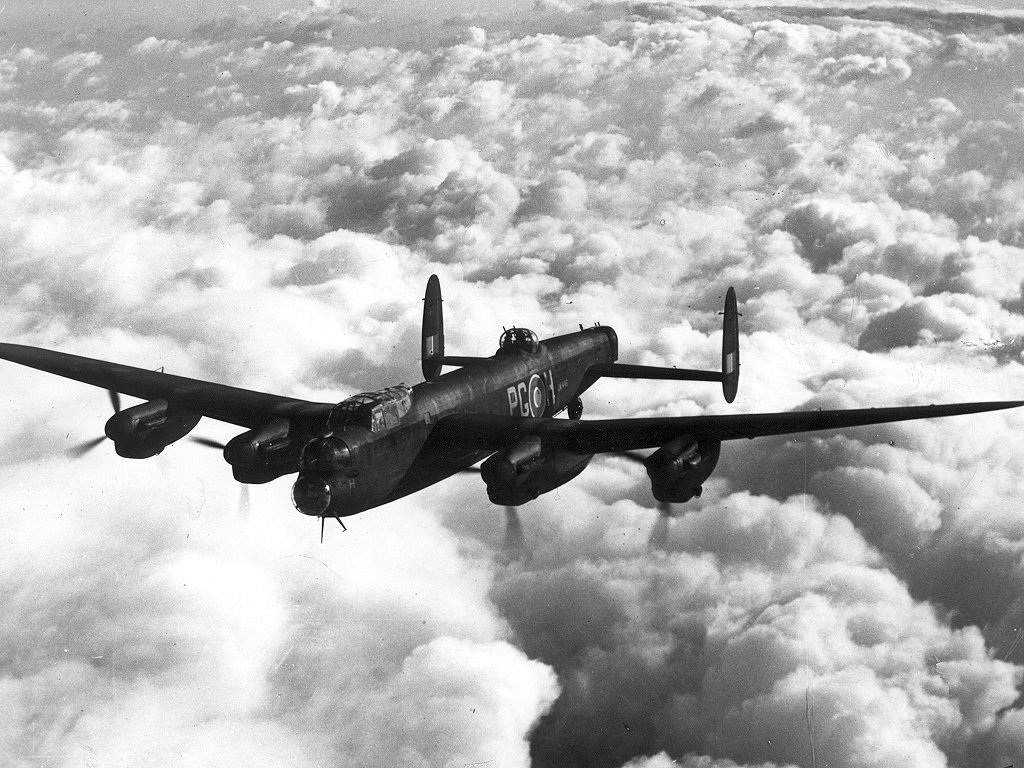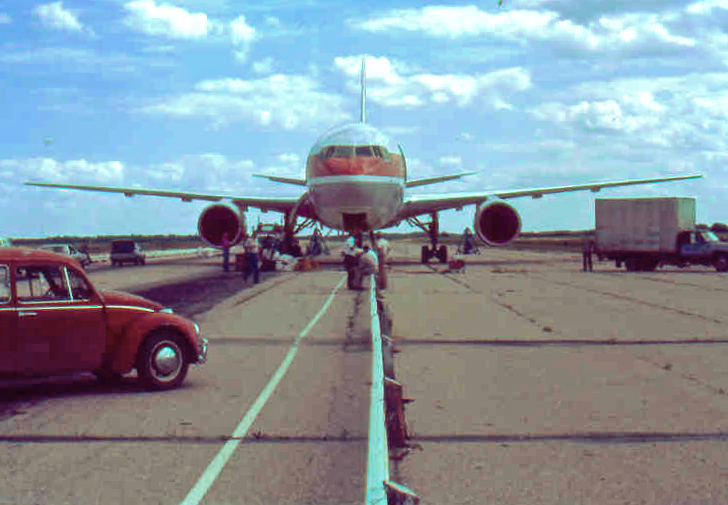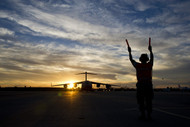5 Emergency Landings that Made History
By on May 8th 2017
When going up in the air, we all hope that, in the end, we reach our destinations safely. We cross our fingers for "textbook" takeoffs and landings. Most of the time, we get our wish--flying is easy peasy. But sometimes our finger crossing isn't enough and things don't go by the book. In the event that ever happens, we can only hope the pilots are as quick-thinking and skilled as these.
Top Emergency Landings
Brocklesby Mid-air Collision
Piggybacking Planes

On September 29, 1940, two Avro Anson aircraft of the No. 2 Service Flying Training School RAAF near Wagga Wagga, New South Wales, Austalia were both flying 1,000 feet over Brocklesby. One (tail number N4876) was piloted by Leonard Graham Fuller with Ian Menzies Sinclair as navigator. The other (tail number L9162) was piloted by Jack Inglis Hewson with Hugh Gavin Fraser as navigator. When they made a banked turn, Fuller lost sight of Hewson's aircraft beneath him. As Fuller slowly decreased altitude, he collided with Hewson's aircraft, which had actually been flying directly beneath him. The two Ansons jammed together.
Fuller's aircraft lost both engines, but Hewson's below continued at full power. Fuller was able to control the
piggybacked pair with his ailerons and flaps. While he searched for a place to land, navigators Sinclair and Fraser abandoned ship. Hewson also bailed. His back had been injured when Fuller's aircraft sliced through his fuselage. Fuller flew 5 miles post-collision and successfully made an emergency pancake landing in a field. His squadron leader called the improvised runway "perfect" and the landing a "wonderful effort." Fuller was credited with avoiding damage to Brocklesby and saving £40,000 worth of military hardware.
Avro Lancaster (LM360)
Düsseldorf

On November 3, 1943, 21-year-old acting flight lieutenant William Reid was headed to Düsseldorf on a mission to drop bombs. Only halfway to his target, a Messerschmitt Bf 110 shattered the windscreen of Reid's
Avro Lancaster and damaged the gun turrets and cockpit. Despite injuries to his hands, shoulders, and head, he continued on. Shortly after the Lancaster was attacked again by a Focke-Wulf Fw 190. This time his navigator was killed and the wireless operator was fatally wounded. Reid was also hit again, and this time the aircraft's oxygen system was damaged beyond use. Part of the tailplane had also been lost, but he decided to carry on.
Without compasses or a navigator, Reid had to dead-reckon Düsseldorf, which he managed to do. He also somehow managed to fly the severely damaged plane in a straight line. After releasing his payload, he set course for home. On the way back, he saw the searchlights for a USAAF-operated base in Norfolk. Despite the lack of bottled O2, blood loss from his injuries, and a head wound that obscured his vision, Reid managed the night landing--although the undercarriage collapsed and the aircraft slid along the runway. The wireless operator died but the rest of the crew survived. Reid was awarded the Victoria Cross for his bravery.
Pan Am Flight 6
"Crash Landing"
On October 15, 1956, a Boeing 377 Stratocruiser ( Clipper Sovereign Of The Skies) departed Honolulu for an overnight flight to the San Francisco International Airport. When the aircraft reached an altitude of 21,000 ft. the No. 1 engine began to overspeed. Though the captain cut off the oil supply to the engine, the propeller continued to windmill in the air stream. This caused excessive drag that significantly increased fuel consumption. The No. 4 engine also failed.
With insufficient fuel to either reach San Francisco or back to Honolulu, the aircraft circled near the U.S. Coast Guard’s ship at the Ocean Station November until daylight. The Captain informed the USCGC Pontchartrain that he was preparing to ditch. One wing hit a swell. The plane rotated, damaging the nose section and breaking off the tail. Everyone on board survived the ditching and were rescued by the Coast Guard before the wreckage sank at 6:35 am October 16. The ditching of Pan Am Flight was the real-life basis for the 1958 film, Crash Landing.
A year later, another Boeing Stratocruiser ( Clipper Romance of The Skies) left San Francisco International Airport for Honolulu but completely disappeared. You can read more about the Mysterious Disappearance of Pan Am Flight 7 here.
Air Canada Flight 143
Gimli Glider

By Copyright holder release per the OTRS ticket – Wikipedia:Contact us/Photo submission, CC BY-SA 3.0, Link
On July 22, 1983, an Air Canada B-767 flew from Toronto to Edmonton and received routine checks. On July 23, the plane flew to Montreal and underwent a crew change. There, as Flight 143, it was to make a return trip to Edmonton with a stopover in Ottawa. When the aircraft was cruising at 41,000 ft over Red Lake, Ontario, they encountered problems. The cockpit warning system went off, indicating a fuel pressure problem on the left side of the aircraft. A second fuel pressure alarm sounded only moments later for the right engine. The pilots diverted to Winnipeg, and within seconds the left engine failed. Once again, the cockpit warning system sounded–all engines out. The 767 utilized an electronic flight instrument system, which operated on the electricity generated by the aircraft’s jet engines. The aircraft lost all power except a ram-air turbine (RAT) emergency hydraulic unit.
An inoperative fuel quantity indicating system and an incorrectly entered fuel load (thanks to metric conversion errors), were what led to the aircraft running out of fuel only halfway through their flight. Thankfully, both the Captain and First Officer were very experienced fliers. Captain Robert Pearson was an experienced glider pilot and was able to figure out the best glide speed for maximum distance. First Officer Maurice Quintal had been in the Royal Canadian Air Force, stationed at Gimli RCAFB, which was closer than Winnipeg. However, Gimli RCAFB had actually become Gimli Industrial Park Airport.
Pearson and Quintal were able to successfully land the aircraft even though it became difficult to control. Pearson executed a forward slip to increase drag and lose altitude. With no engines and virtually no noise, the commercial jet was nearly silent on its approach towards the people on the ground. None of the 61 passengers or people on the ground sustained serious injury. Captain Pearson was demoted for six months, and First Officer Quintal was suspended for two weeks for allowing the incident to happen. In 1985, however, they were awarded the first ever Fédération Aéronautique Internationale Diploma for Outstanding Airmanship.
US Airways Flight 1549
“Miracle on the Hudson”
The January 15, 2009 emergency landing into the Hudson River made an impact on the entire world. After only three minutes post-takeoff from LaGuardia Airport in New York City, the Airbus A320-214 encountered a flock of Canadian Geese Northeast of the George Washington Bridge at an altitude of 2,818 feet. The strike resulted in the shutdown of both engines. Passengers and crew reported hearing loud bangs and seeing flames from the engines. While pilot Jeffrey Skiles worked the checklist for engine restart, Pilot Chesley Sullenberger tried to take control. Unable to make it back to LaGuardia, the plane made an unpowered ditching into the middle of the Hudson River.
All 155 people on board were rescued by boats and few sustained serious injuries. The entire crew was later awarded the Master’s Medal of the Guild of Air Pilots and Air Navigators in recognition of their heroic efforts and aviation achievement. Captain Sullenberger became a celebrity. A National Transportation Safety Board (NTSB) member called this incident as "the most successful ditching in aviation history." Both the incident and Captain Sullenberger have been featured or mentioned in media and pop culture extensively, including Clint Eastwood's feature film,
Sully: Miracle on the Hudson, adapted from Sullenberger's memoir, Highest Duty: My Search for What Really Matters.
Sources:
https://en.wikipedia.org/wiki/1940_Brocklesby_mid-...
https://en.wikipedia.org/wiki/Pan_Am_Flight_6
https://en.wikipedia.org/wiki/William_Reid_VC
https://en.wikipedia.org/wiki/Gimli_Glider
https://en.wikipedia.org/wiki/US_Airways_Flight_15...







